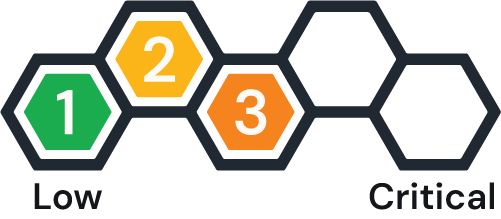Preparation: The Real Secret to Saving Money in Cybersecurity
So, you’re dealing with a data breach. Whether it’s the result of a major cyberattack or something as simple as a leaked classified text message thread, what you do next truly matters. Taking the right steps now can help prevent further information loss and get to the root of what went wrong.
Risk Level
Read Time
“What is the Business Risk of a Breach?”
Cyber threats don’t care how big or small your business is – they’re always lurking. In fact, IBM reported that the average global cost of a data breach in 2024 was over $4.8 million, a 10% jump from 2023. If your systems are cloud-based, that number climbs to $5.17 million.
While it might seem like having a smaller business footprint makes you less of a target, studies have shown that smaller businesses are actually at an even greater risk. Why? Two big reasons:
Budget, and
Cybersecurity resiliency
The real issue comes down to available resources. Most small businesses simply don’t have the budget to proactively defend themselves. In addition, most don’t have the financial cushion to absorb the cost of a breach should one occur. This problem only grows further when the primary motivation for attacks were financially motivated, with 62% of breaches being due to ransomware or extortion. The Verizon 2024 data breach investigation found that the median loss of a ransomware incident was $46,000 per breach.
Without a solid cyber defense or the money to recover from an attack, small businesses end up carrying the biggest risk. It’s a Catch-22: no funds for prevention, and no safety net if something goes wrong.
“We had an accidental internal leak, not an attack”
While you might be thinking, “At least we weren’t targeted directly,” don’t let that lull you into a false sense of security. Internal issues such as poor data handling have proven to be the biggest threat businesses. Verizon’s 2024 breach report showed that 68% of all breaches involved a human element, with phishing topping the list.
That leads us to our biggest (and maybe most obvious) piece of advice: employee cybersecurity awareness is everything. Whether it’s a new hire or a seasoned admin, everyone needs to understand the risks associated with their role. Investing in employee training costs far less than dealing with a full-blown data breach.
"I have a small company - what can I do to reduce my risk of a breach?"
As a small business, setting aside a dedicated cybersecurity budget can be challenging. But the good news is that protecting your company’s data doesn’t have to break the bank. One of the most impactful steps you can take early-on is to create and maintain a clear Incident Response Plan (IRP).
Many small organizations don’t have an IRP in place, which can make them more vulnerable when an incident occurs. Without a plan, the damage and financial impact of an attack can be much more severe, primarily because your team will not know what to do during the incident.
An effective IRP for any sized business should include:
Clear roles and responsibilities for team members during an incident;
Steps to identify and eliminate the cause of the issue; and,
A plan to restore systems and data back to normal operations.
It’s easy to think that once everything is up and running again, the job is done; unfortunately, that’s far from the case. What you do after an incident is just as important as the steps taken during an active incident. Post-incident analysis helps you understand what went wrong and why. If your team does not employ retroactive thinking when analyzing incidents, you miss the opportunity to fix underlying issues and prevent similar incidents in the future.
This kind of follow-through can have a big impact - not just on your systems, but also to your organization’s reputation. How a company communicates and learns from an incident shapes how it’s perceived by the public moving forward.
To strengthen your preparedness, consider running tabletop exercises - these are practice scenarios that simulate real-world cybersecurity events. Even if these scenarios never actually happen, the experience helps your team build confidence, establish communication between colleagues, and increase readiness. It’s a simple, cost-effective way to improve your overall security posture.
No matter your size, it’s critical to adopt a cybersecurity-first mindset. At Hive Systems, we specialize in helping organizations build risk-aware strategies with a focus on growth and long-term security. If you’re ready to protect your environment, we’re here to help.
Follow us - stay ahead.




